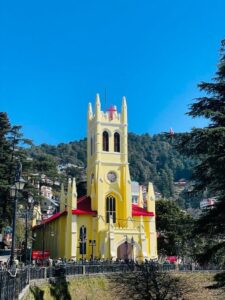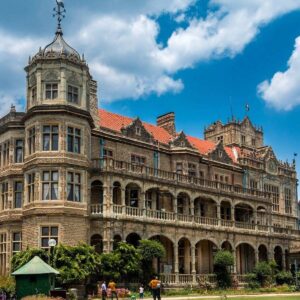Introduction
In the heart of Shimla’s bustling Mall Road, surrounded by charming cafés, colonial-era buildings, and the evergreen vibrance of tourists, stands a timeless jewel of cultural heritage—the Gaitey Theatre. Known for its Victorian Gothic architecture and its illustrious past as a stage for Shakespearean dramas, musical evenings, and art shows, Gaitey Theatre is more than a building—it’s a living story carved into Shimla’s identity.
For over a century, this theatre has remained a cultural heartbeat of the hill town. Built during the British Raj, it was designed to entertain the officers and elites of the colonial administration. Over time, it transformed into a symbol of art, resilience, and history, bridging Shimla’s colonial charm with its modern cultural pursuits.
If you are a traveler exploring Shimla or a heritage enthusiast, Gaitey Theatre offers not just an architectural spectacle but also a journey into the past. In this long-form guide, we’ll uncover its history, architecture, cultural importance, preservation efforts, and visitor details—everything you need to know about this Victorian-era cultural landmark.
History of Gaitey Theatre
Origins in the British Colonial Era (1877–1887)
Shimla became the summer capital of British India in the 1860s, and with this prestigious title came the need for entertainment avenues for colonial officials and their families. Recognizing this, the British commissioned the construction of a theatre in the late 1870s.
By 1887, Gaitey Theatre was completed as part of the Town Hall Complex, designed by Henry Irwin, one of the most prominent architects of the colonial era. Irwin is credited with designing several heritage landmarks in India, including the Viceregal Lodge (Rashtrapati Niwas) in Shimla and the Mysore Palace.
The name “Gaitey” (derived from gaiety, meaning cheerfulness or merriment) reflected its intended purpose—to provide cultural joy and recreation for the ruling class.
A Cultural Stage for the Raj
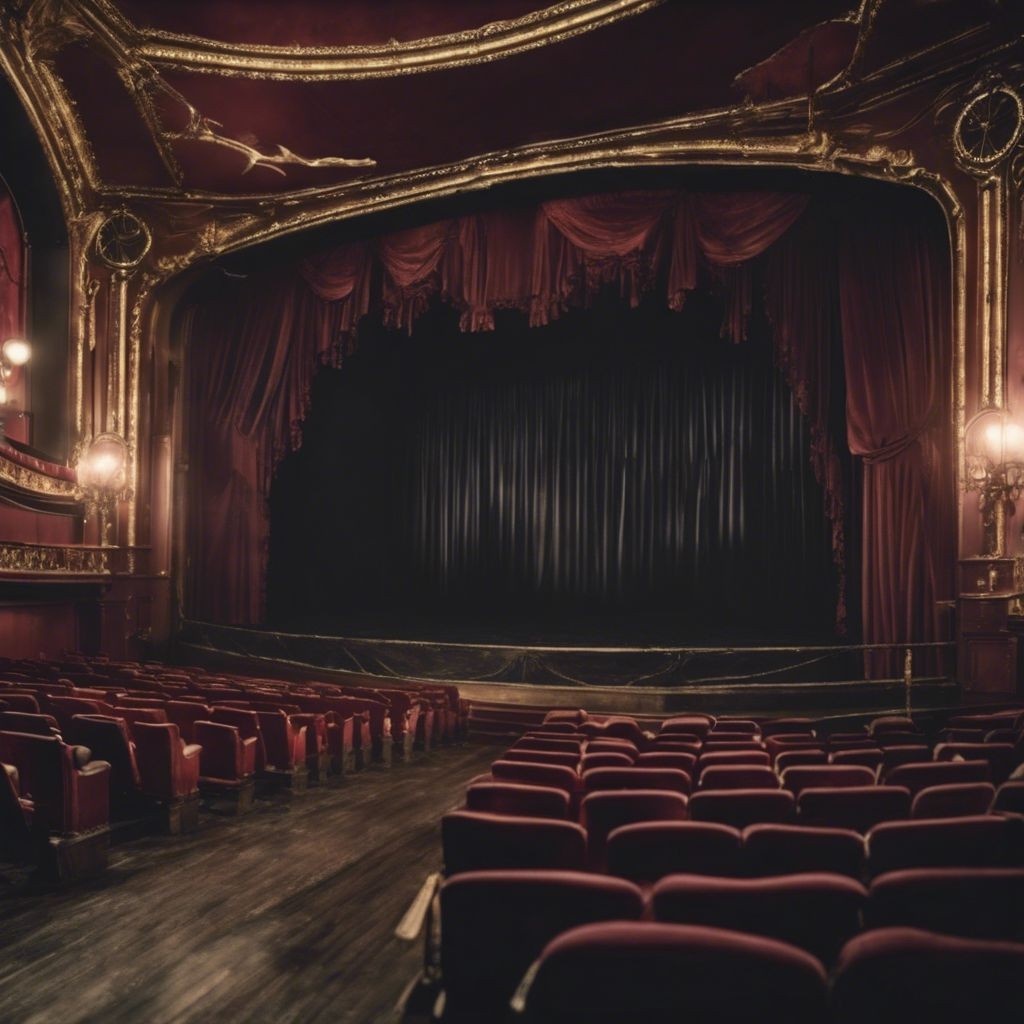
During the Raj, Gaitey Theatre was not just a playhouse; it was a status symbol. It hosted performances by amateur British actors, Shakespearean plays, and ballroom evenings attended by aristocrats, officers, and even Viceroys. It became a center of high society, where theatre blended seamlessly with social gatherings.
The theatre was part of a larger Gaitey Complex, which included a ballroom, police station, art gallery, bar, and municipal offices. This made it a multipurpose hub for colonial Shimla, balancing administration with leisure.
Architectural Significance
Victorian Gothic Grandeur
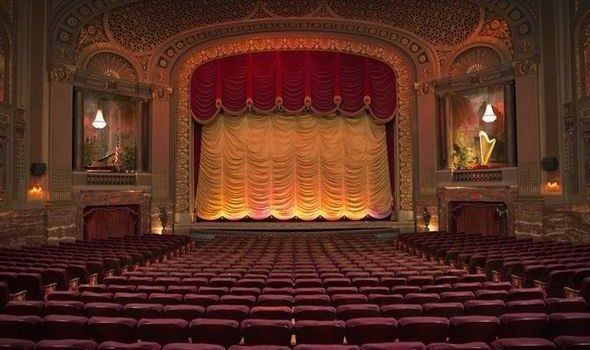
The architecture of Gaitey Theatre embodies the Victorian Gothic Revival style, a popular European design of the 19th century. This style emphasized grandeur, intricate stonework, and pointed arches.
Key architectural features include:
- Grey stone masonry exterior with Gothic elements

- Pointed arch windows with stained glass designs

- Wooden balcony seating with ornate carvings
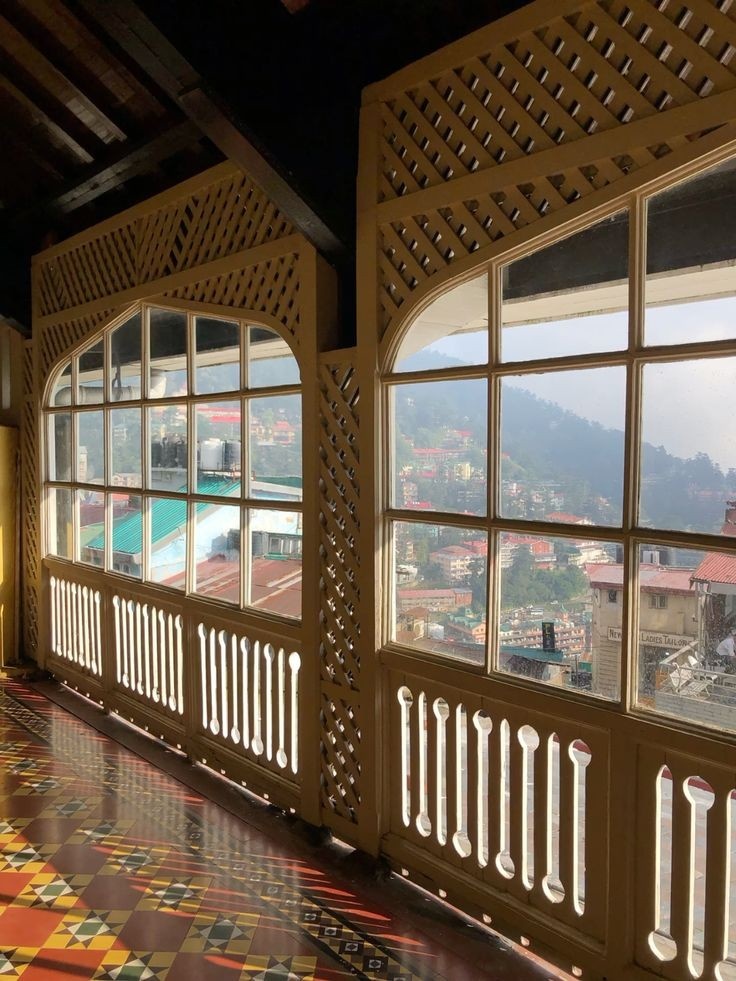
- Proscenium stage modeled after European playhouses
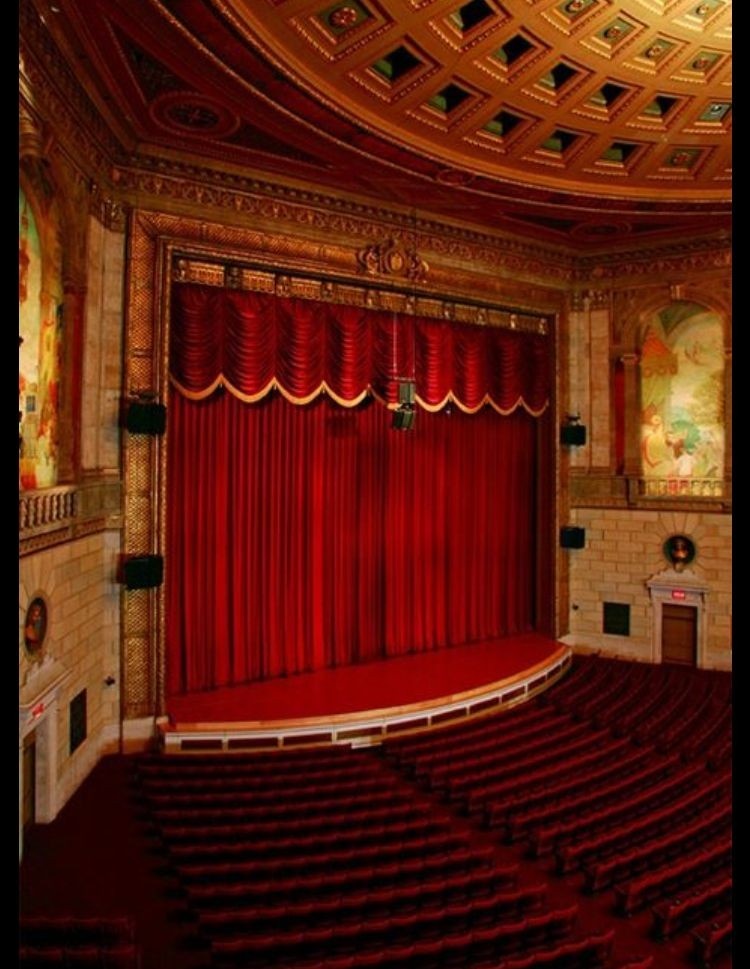
Though initially built to seat around 1,200 people, parts of the complex were later demolished due to structural concerns. Today, only the main theatre hall remains fully functional, but it retains its vintage charm.
Interior Marvels
Walking inside Gaitey Theatre is like stepping back in time. The restored hall boasts:
- A wooden gallery reminiscent of London’s Victorian theatres
- A stage once lit by oil lamps and chandeliers
- Frescoes and artistic detailing on the walls
- Acoustics designed to carry voices clearly without amplification
This attention to detail makes Gaitey Theatre one of the finest surviving examples of Gothic theatres in India.
Cultural Importance Through the Ages
Shakespearean Influence
Theatre was an integral part of British culture, and in Shimla, Gaitey became its epicenter. Plays by Shakespeare, Oscar Wilde, and Bernard Shaw were staged frequently. Imagine the snow outside Mall Road while inside, audiences were captivated by Hamlet or The Merchant of Venice.
Concerts and Social Events
Beyond theatre, Gaitey was also a venue for concerts, art exhibitions, and ballroom dances. It served as a social club where the colonial elite gathered to celebrate festivals, organize charity events, and foster community bonding.
Legends and Anecdotes
There are accounts that Rudyard Kipling, author of The Jungle Book, attended performances here during his Shimla visits. Some also believe the theatre’s halls inspired parts of his satirical stories about Anglo-Indian society.
Gaitey Theatre in Independent India
Decline After Independence
After 1947, with the departure of the British, Gaitey Theatre’s glory faded. The theatre was neglected, portions of the complex crumbled, and maintenance was almost nonexistent. What was once a jewel of Shimla began to show signs of ruin.
Restoration and Revival
Recognizing its historical and cultural significance, the Himachal Pradesh Government initiated restoration in the late 20th century. The Archaeological Survey of India (ASI) also contributed to preservation efforts.
The restoration included:
- Strengthening the stone walls
- Repairing wooden balconies
- Restoring frescoes and stained glass
- Modernizing lighting and seating without losing authenticity
Today, Gaitey Theatre is part of the Gaiety Heritage Cultural Complex, which includes an art gallery, multipurpose hall, and city museum.
Present-Day Gaitey Theatre
Hub for Cultural Activities
Today, Gaitey Theatre is no relic—it’s alive with performances. It hosts:
- Shimla Summer Festival events
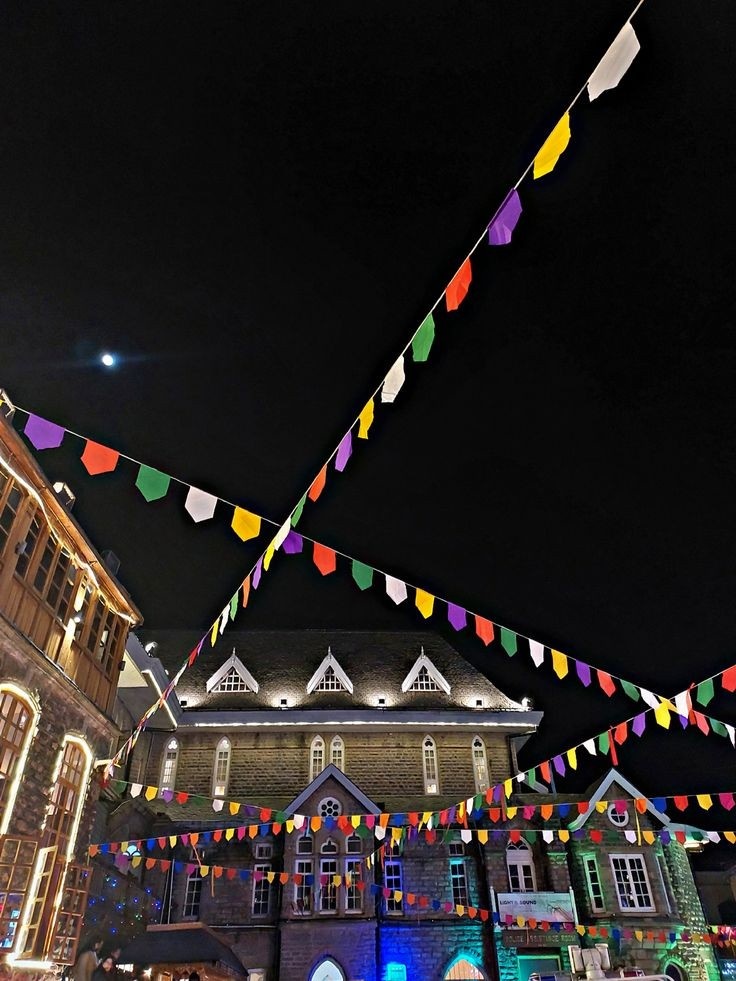
- Theatre workshops & festivals

- Film screenings and art shows
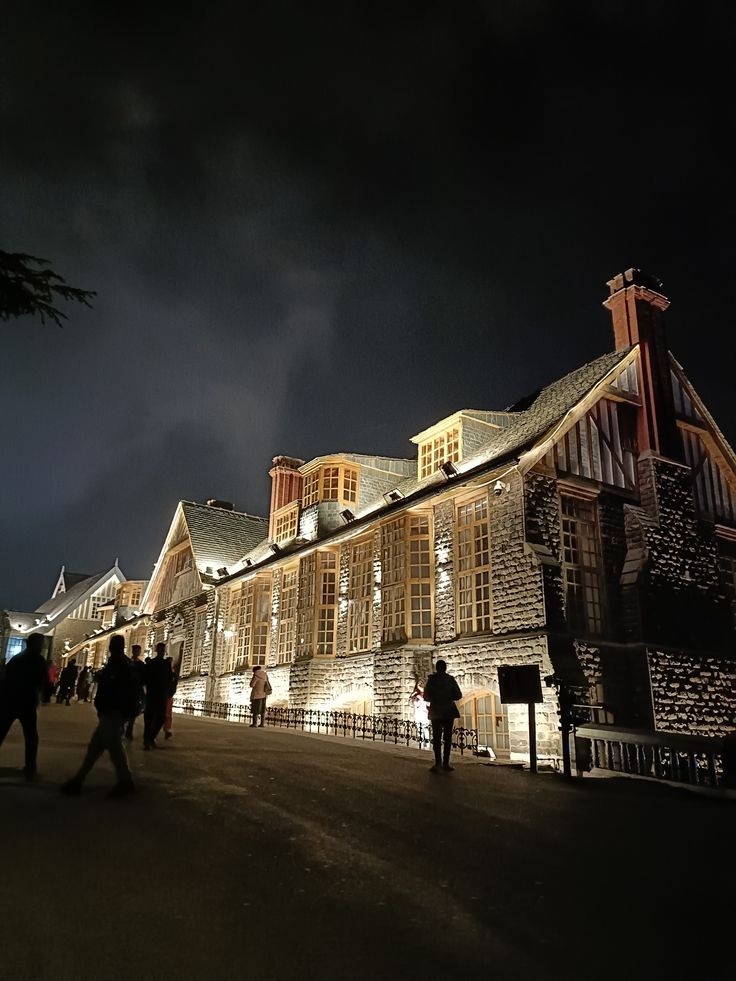
- School & college drama competitions
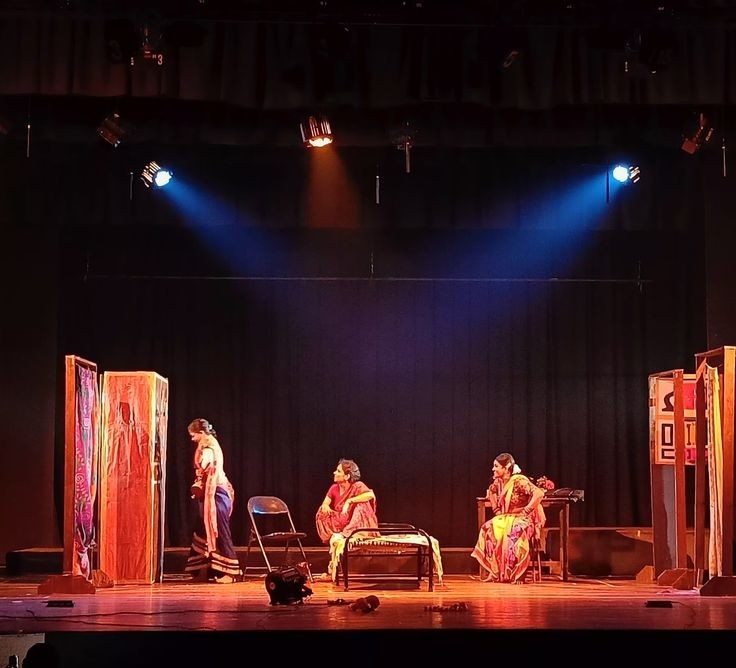
Bollywood and Celebrity Connection
Over the years, Gaitey has attracted some of India’s most famous actors:
- Anupam Kher began his acting journey here.
- Naseeruddin Shah and Shahrukh Khan have also been associated with performances linked to Gaitey.
- Bollywood often uses its Victorian backdrop for cultural references and film shoots.
Tourist Magnet
For tourists strolling along Mall Road, Gaitey Theatre is a must-visit attraction. Whether you catch a play, attend an exhibition, or simply marvel at its Gothic façade, the experience blends history with culture.
Famous Personalities & Events Linked to Gaitey
- Khayyam, the legendary music composer, performed here early in his career.
- International theatre groups have staged productions, making Gaitey a global cultural exchange hub.
- The theatre has hosted political speeches, art conferences, and heritage awareness events over the decades.
Tourism and Visitor Guide
How to Reach
- Location: Mall Road, near The Ridge, Shimla.
- Access: Walking distance from most central attractions. Local taxis drop you at the Ridge; from there it’s a short walk.
Timings & Entry
- Timings: 9:00 AM – 5:00 PM (tourist visits), evenings reserved for shows.
- Entry Fee: Approx. ₹30–₹50 (subject to change).
Nearby Attractions
- Christ Church Shimla – Iconic 19th-century church
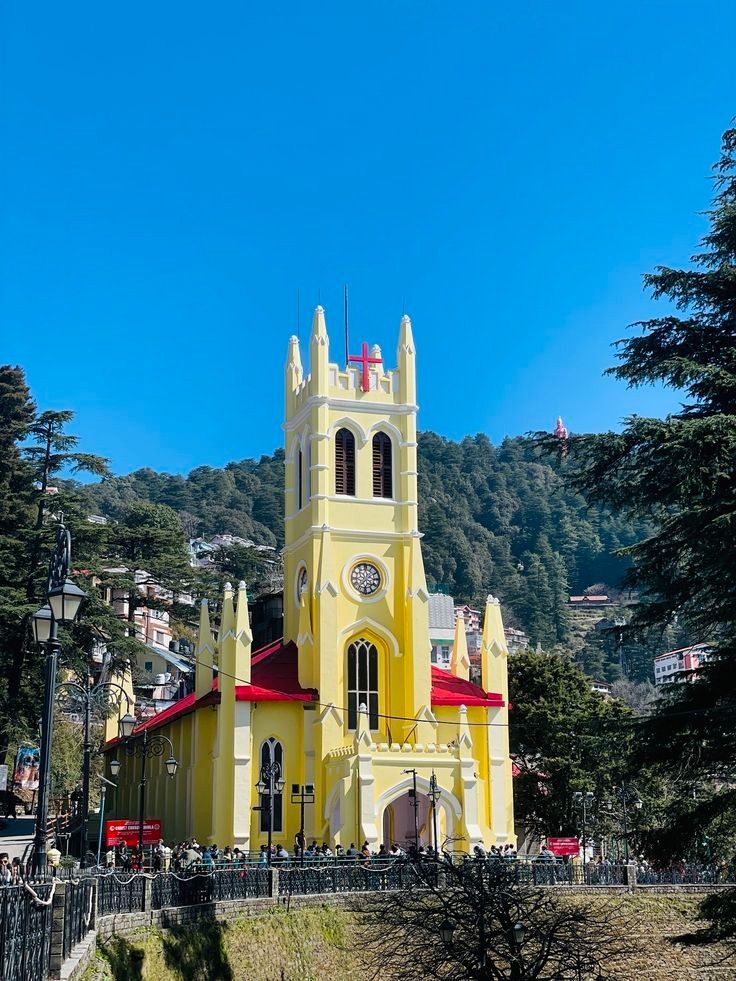
- The Ridge – Cultural and social hub

- Mall Road – Shopping & dining paradise

- Town Hall – Another heritage structure
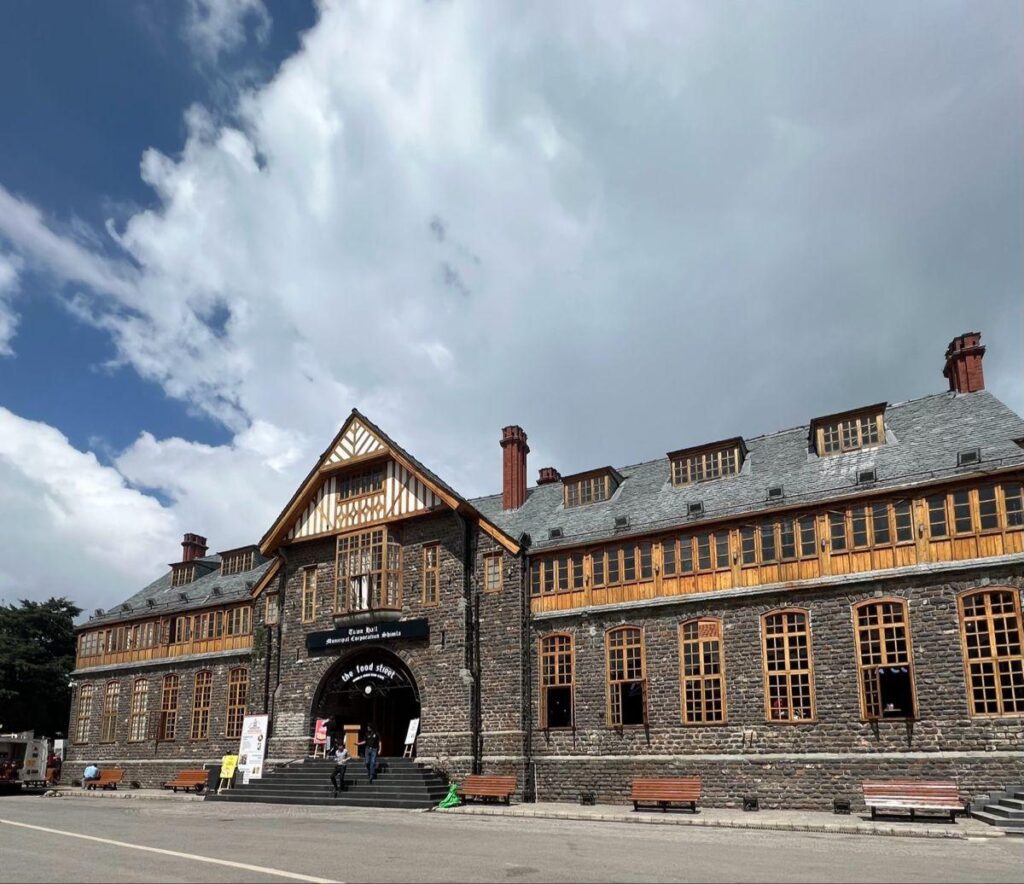
Best Time to Visit
- March–June: Pleasant weather, Summer Festival events
- October–December: Festive season with a colonial winter charm
Tip: Try to catch a live theatre performance—it’s the best way to feel Gaitey’s cultural aura.
Preservation & Heritage Efforts
Maintaining Gaitey Theatre is no small task. The challenges include:
- Weather damage due to Shimla’s snow and rains
- Balancing modernization with authenticity
- Funding constraints for cultural projects
Efforts by the state government, ASI, and cultural organizations ensure that Gaitey remains functional and relevant. Heritage tourism also generates revenue that contributes to its upkeep.
Why Gaitey Theatre Matters Today
- It is a rare surviving example of Victorian Gothic theatre architecture in India.
- It keeps the spirit of drama and cultural exchange alive in Shimla.
- It acts as a symbol of Shimla’s identity, bridging colonial past and modern artistry.
Gaitey Theatre isn’t just a monument; it’s a living story of art, resilience, and community.
Conclusion
The story of Gaitey Theatre is one of glory, decline, and revival. From its early days as a cultural hub of the British Raj to its present role as a stage for art, theatre, and heritage, it continues to inspire audiences and preserve Shimla’s identity as more than just a hill station—it’s a cultural capital of the Himalayas.
So, the next time you walk along Mall Road, don’t just pass by Gaitey Theatre. Step inside, breathe in the echoes of Shakespearean verses, admire the Gothic arches, and be part of the living history of Shimla’s Victorian-era cultural landmark.


